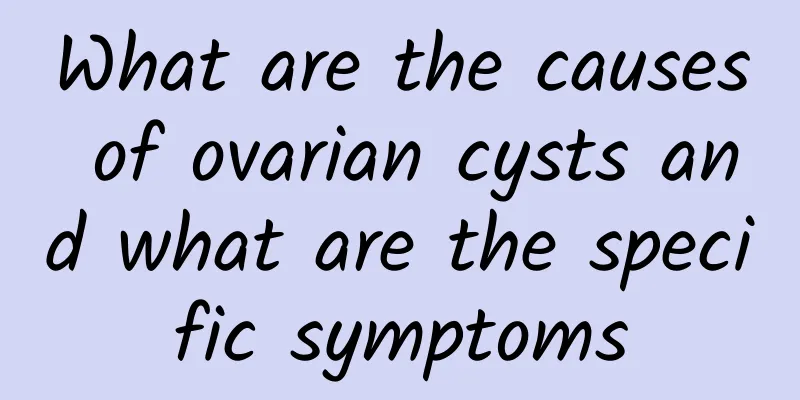What are the causes of ovarian cysts and what are the specific symptoms

|
The ovaries are relatively small organs in the human body, but they are the most common sites for various tumors. Ovarian tumors can have various properties and forms: single or mixed, unilateral or bilateral, cystic or solid, benign or malignant, and many ovarian tumors can produce female or male sex hormones. So, what are the causes of ovarian cysts and what are the specific symptoms? There are many reasons for the formation of ovarian cysts, the most common ones are the following three: 1. Environmental factors. Unreasonable dietary structure, high cholesterol diet, vitamin A, C, E deficiency, smoking, ionizing radiation and other environmental factors are related to the occurrence of ovarian cysts; 2. Endocrine factors. The incidence rate of nulliparous or childless women increases; early menarche before the age of 12, menopause after the age of 50, frequent menstruation, use of ovulation-inducing agents for more than 3 cycles, precocious puberty or virilization are also related to the occurrence of ovarian cysts; 3. Bad living habits. Bad living habits, excessive psychological pressure and other factors cause excessive acidification of the body, which reduces the overall function of the human body, causing kidney deficiency, which in turn causes the metabolic cycle in the lower part of the body to slow down, causing endocrine disorders, decreased immune function, and ultimately leading to ovarian cysts; Clinically, ovarian cysts often present with lower abdominal pain, lower abdominal discomfort, increased leucorrhea, yellow leucorrhea, leucorrhea odor, and menstrual irregularities. There is usually a solid and painless mass in the lower abdomen, and sometimes pain during sexual intercourse. When the cyst affects hormone secretion, symptoms such as irregular vaginal bleeding or increased hair growth may occur. If the cyst pedicle is twisted, there will be severe abdominal pain, bloating, difficulty breathing, decreased appetite, nausea, and fever. Larger cysts will cause pressure near the bladder, causing frequent urination and difficulty urinating. Especially when these symptoms are more severe, bleeding is frequent, and they occur at the same time, women are more likely to suffer from ovarian cysts, and the harm of malignant ovarian cancer is greater. |
<<: How to diagnose pelvic inflammatory disease
>>: Dietary guidance for cervical precancerous lesions
Recommend
Is yellowish watery vaginal discharge a sign of cancer? The likelihood is low
Yellowish watery vaginal discharge may be a sign ...
To prevent fat accumulation and obesity, is guava a magic weapon? Nutritionist He Ziyi: Eating 4 kinds of high-fiber fruits can help you lose weight
Abdominal fat accumulation is not only a big enem...
Cervical hypertrophy bleeding after exercise
Bleeding after exercise due to cervical hypertrop...
Only by taking good care of adnexitis can we keep the disease away from us
The occurrence of adnexitis brings a lot of incon...
What drugs are effective in treating endometrial tuberculosis?
We all know about endometrial tuberculosis. The i...
Prevention of Dysmenorrhea
Traditional Chinese medicine believes that "...
What is the usual treatment for chronic adnexitis?
Nowadays, the incidence of adnexitis is getting h...
The key to losing weight in winter is to increase body temperature by 1 degree to accelerate metabolism
The biggest enemy of weight loss in winter is low...
Diagnosis of cervical hypertrophy is urgent
Cervical hypertrophy is one of the common disease...
What are the symptoms of menopausal irregular menstruation? How to regulate menopausal irregular menstruation for women?
Menopause Irregular Menstruation Menopause is a s...
What are the causes of ectopic pregnancy?
Everyone must be unfamiliar with the term ectopic...
Obesity makes you age faster! 3 ways to slow down your exercise to regain your youthful vitality
The movie "My Girlhood" is a hit, and m...
How to regulate irregular menstruation for women? What are the causes of irregular menstruation for women?
There are many reasons for irregular menstruation...
Honey water is super powerful for detoxification and weight loss! Drink at these 4 best times to double the effect
Honey water is a very healthy drink. It can not o...
What medicine can cure moderate inflammation of cervical erosion?
What medicine can cure moderate inflammation of c...









